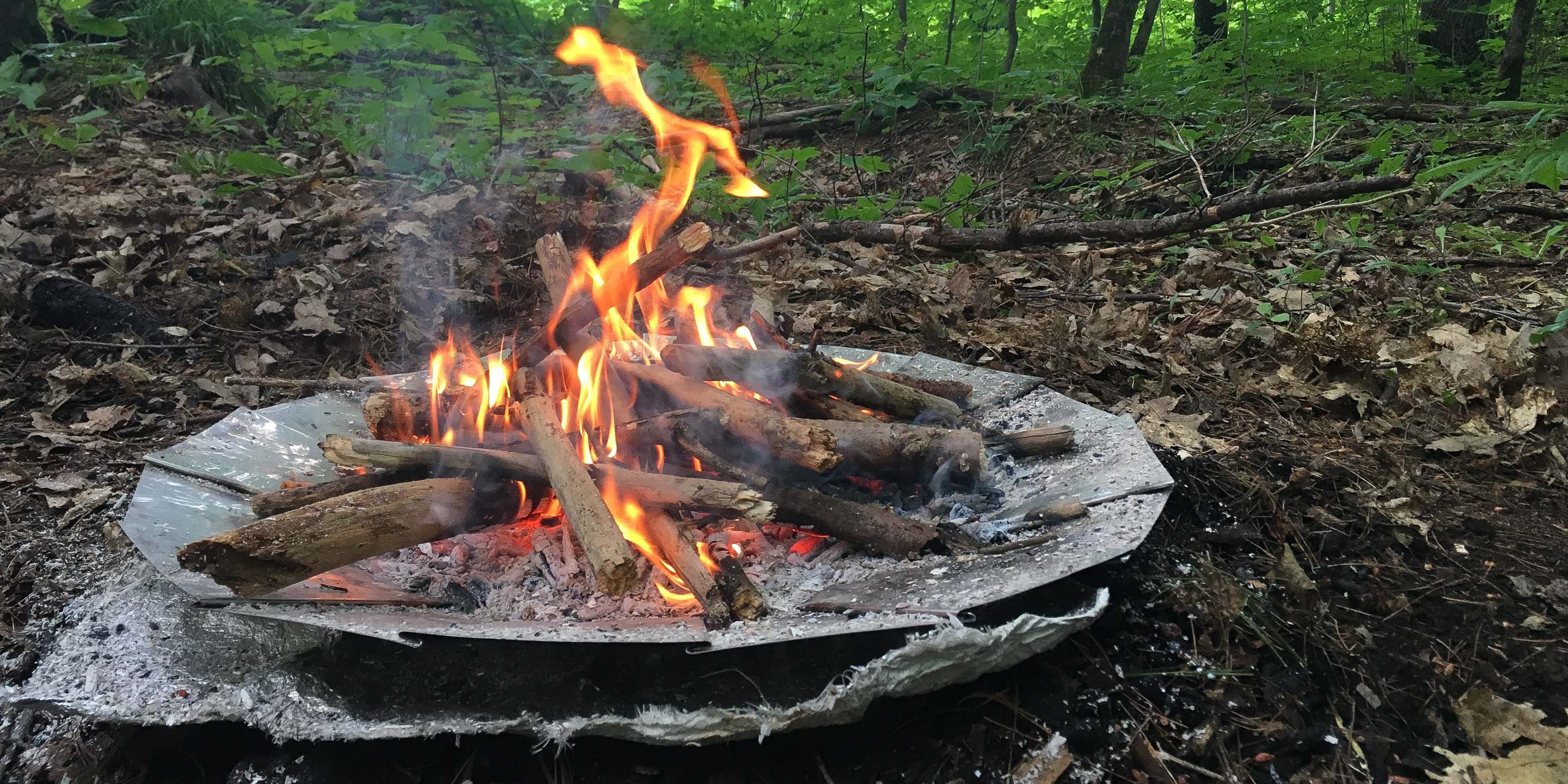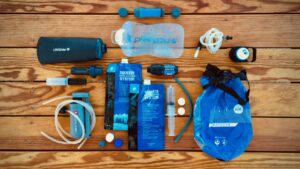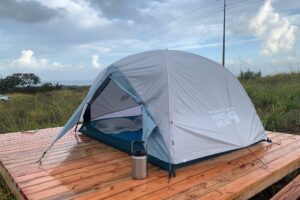Leave no trace is a set of principles for minimizing environmental impact while backpacking. It involves seven principles aimed at preserving natural resources and minimizing negative human impact on the environment.
Backpackers are encouraged to plan ahead and prepare, dispose of waste properly, and minimize campfire impact, among other things. Backpacking allows people to experience nature in its purest form. However, backpackers also have a responsibility to minimize their impact on the environment.
This is where the leave no trace principles come in. The principles aim to educate backpackers on how to reduce their negative impact on the environment while enjoying their time in nature. In this article, you will learn the seven leave no trace principles and how to apply them while backpacking. Following these principles will ensure that you and future generations can continue to enjoy the beauty of the wilderness for years to come.

Credit: lnt.org
The Five Principles Of Leave No Trace
Leave No Trace: Minimizing Environmental Impact While Backpacking
Backpacking is an amazing experience, but it also bears a great responsibility. As a backpacker, you have the power to protect the environment by respecting the place you visit and minimizing the impact of your presence. One of the best ways to achieve this goal is by adhering to the five principles of leave no trace.
Principle One: Plan Ahead And Prepare
Before setting off for your backpacking trip, it is essential to plan ahead and prepare to ensure that you’ll have a safe and enjoyable experience. Here are the key points to take into account:
- Research the area’s regulations, permits, weather, terrain, and hazards to keep yourself safe and avoid damaging the environment.
- Choose a campsite that has been established by previous campers and minimize your impact by using existing tent sites, campfire rings, and trails.
- Pack with intention, bringing only the necessary equipment and leaving unnecessary items at home to lighten your load and avoid litter.
- Bring enough food and water to sustain you throughout the trip and pack them in reusable containers to reduce waste.
Principle Two: Travel And Camp On Durable Surfaces
To preserve the natural landscape, it’s important to travel and camp on durable surfaces such as established trails and campsites. Here are the key points:
- Stick to the established trails and avoid creating new ones to prevent soil erosion and damage to vegetation.
- Camp on durable surfaces such as established campsites or areas with durable natural surfaces like rock, gravel, or dry grass to avoid damaging vegetation and fragile soils.
- Set up your tent at least 200 feet away from lakes, streams, and other water sources to reduce the risk of polluting them.
Principle Three: Dispose Of Waste Properly
Proper waste disposal is vital to prevent pollution and protect the beauty and health of the environment. Here are the key points:
- Pack out all your trash, leftover food, and litter, including fruit peels, skins, and seeds, and dispose of them properly in the designated trash cans.
- Urinate at least 200 feet away from lakes, streams, and other water sources.
- Dispose of human waste in catholes dug at least 6 to 8 inches deep and 200 feet away from water sources, campsites, and trails.
Principle Four: Leave What You Find
Leaving what you find is a way of respecting the environment and preserving its natural state for future generations. Here are the key points:
- Leave rocks, plants, artifacts, and other natural and cultural objects as you find them to avoid damaging or disturbing them.
- Do not build structures, dig trenches, or create any other human-made impact in the wilderness.
- Respect wildlife by observing them from a distance and not feeding them.
Principle Five: Minimize Campfire Impact
While having a campfire is a fun and cozy way to end your day, it can be harmful to the environment if not managed correctly. Here are the key points:
- Check whether campfires are allowed in the area you plan to visit and if so, use established fire rings and grills when provided.
- Use a camp stove to cook food to reduce the impact of creating campfires.
- Keep your campfire small and manageable to avoid damage to vegetation and soil. Use small sticks and twigs you find on the ground to fuel your fire instead of breaking branches off living trees.
By following these five principles of leave no trace, you can take care of the environment while enjoying the beautiful wilderness around you. Happy backpacking!
Practical Tips For Applying Leave No Trace Principles
Plan Ahead For The Expected Weather And Terrain Conditions
When planning a backpacking trip, researching and analyzing the expected weather and terrain conditions ahead will assist you in determining what you need to pack. This way, you are not caught off guard and forced to leave items or resources in the wilderness.
In addition, pre-planning allows for adjustments to be made to your itinerary and route to minimize environmental impact. Here are some tips to consider:
- Research weather patterns and conditions for the timeframe you plan to backpack
- Consider the terrain you will be covering and the impact it may have on the environment
- Plan your itinerary and route to reduce environmental impact
- Pack only what you need for your trip, ensuring that you do not leave anything behind in the wilderness
Respect Wildlife By Keeping Your Distance And Not Leaving Food In Campsites
Wildlife calls the wilderness home and as visitors, we need to respect their habitat. One of the primary ways to show we care is by keeping our distance when encountering wildlife. Feeding wildlife can have negative consequences both for the animal and the environment.
Here are some tips to consider:
- Observe wildlife from a safe distance, at least 200 feet away
- Do not leave food unattended or unsecured; use bear canisters and hang food bags from trees
- Do not feed wildlife as this can cause them to become dependent upon humans and damage the environment
Pack Out All Trash And Leftovers, Including Personal Hygiene Items
Leaving trash behind can harm the environment and wildlife. Packing out all of your trash and leftovers is a fundamental part of leave no trace principles. Here are some tips to consider:
- Bring trash bags with you
- Pack out all trash and leftovers, including personal hygiene items
- Do not bury or burn food waste as it can attract animals and can take a long time to decompose
Use Biodegradable Soap To Wash Dishes Or Yourself And Avoid Chemicals That Harm The Environment
When backpacking, it is essential to maintain personal hygiene. However, using soap that contains harsh chemicals can harm the environment. Biodegradable soap is a better option as it is designed to break down and dissolve in the environment quickly. Here are some tips to consider:
- Use biodegradable soap when washing dishes or yourself
- Avoid using soap directly in a water source or within 200 feet of a water source
- Avoid using products that contain chemicals that can harm plants, animals, and water sources
Bury Human Waste In A Cathole 6-8 Inches Deep And At Least 200 Feet From Water Sources Or Trails
Human waste can have severe environmental consequences. To reduce the impact on the environment, burying human waste in a cathole is crucial. Here are some tips to consider:
- Choose a spot at least 200 feet from water sources or trails
- Dig a hole that is 6-8 inches deep and 4-6 inches across
- Bury human waste and all toilet paper in the cathole
- Cover the cathole with soil and natural materials
Learn How To Properly Hang A Bear Bag Or Use Bear Canisters To Store Food And Scented Items Away From Bears And Other Animals
Bears and other wildlife have a keen sense of smell and can detect food from a distance. Properly storing food in bear canisters or hanging bear bags from trees will reduce the risk of attracting wildlife to your campsite. Here are some tips to consider:
- Learn how to properly hang a bear bag at least 10-12 feet above the ground and 4-6 feet away from the trunk
- Use bear canisters designed to protect food and aromatic items
- Keep backpacks and cooking gear stored with food to reduce scent dispersion
Know The Regulations And Guidelines For The Specific Area You Are Visiting And The Leave No Trace Policies In Use
Different areas have different regulations and guidelines that need to be followed to keep the environment in pristine conditions. Knowing the policies for the area you plan to visit is a vital part of leave no trace principles. Here are some tips to consider:
- Research the policies and regulations for the specific area you are visiting
- Familiarize yourself with the leave no trace principles relevant to the location
- Respect all local regulations and guidelines to maintain the environment’s integrity
Conclusion
As avid backpackers, it’s our responsibility to protect the great outdoors and minimize our environmental impact. Leave no trace principles are guidelines that can help us achieve this goal. By familiarizing ourselves with these principles – plan ahead and prepare, travel and camp on durable surfaces, dispose of waste properly, leave what you find, and minimize campfire impact – we can preserve the natural beauty of our wilderness areas for generations to come.
These principles provide a framework for making responsible decisions while hiking and camping. It’s crucial to remember that we all have a role in protecting the environment. By being mindful of our actions and following leave no trace principles, we can ensure that we’re doing our part to preserve our natural world.
So, let’s get outside, enjoy the beauty of our wilderness areas, and leave them better than we found them.




